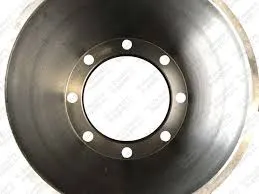
-
 Afrikaans
Afrikaans -
 Albanian
Albanian -
 Amharic
Amharic -
 Arabic
Arabic -
 Armenian
Armenian -
 Azerbaijani
Azerbaijani -
 Basque
Basque -
 Belarusian
Belarusian -
 Bengali
Bengali -
 Bosnian
Bosnian -
 Bulgarian
Bulgarian -
 Catalan
Catalan -
 Cebuano
Cebuano -
 Corsican
Corsican -
 Croatian
Croatian -
 Czech
Czech -
 Danish
Danish -
 Dutch
Dutch -
 English
English -
 Esperanto
Esperanto -
 Estonian
Estonian -
 Finnish
Finnish -
 French
French -
 Frisian
Frisian -
 Galician
Galician -
 Georgian
Georgian -
 German
German -
 Greek
Greek -
 Gujarati
Gujarati -
 Haitian Creole
Haitian Creole -
 hausa
hausa -
 hawaiian
hawaiian -
 Hebrew
Hebrew -
 Hindi
Hindi -
 Miao
Miao -
 Hungarian
Hungarian -
 Icelandic
Icelandic -
 igbo
igbo -
 Indonesian
Indonesian -
 irish
irish -
 Italian
Italian -
 Japanese
Japanese -
 Javanese
Javanese -
 Kannada
Kannada -
 kazakh
kazakh -
 Khmer
Khmer -
 Rwandese
Rwandese -
 Korean
Korean -
 Kurdish
Kurdish -
 Kyrgyz
Kyrgyz -
 Lao
Lao -
 Latin
Latin -
 Latvian
Latvian -
 Lithuanian
Lithuanian -
 Luxembourgish
Luxembourgish -
 Macedonian
Macedonian -
 Malgashi
Malgashi -
 Malay
Malay -
 Malayalam
Malayalam -
 Maltese
Maltese -
 Maori
Maori -
 Marathi
Marathi -
 Mongolian
Mongolian -
 Myanmar
Myanmar -
 Nepali
Nepali -
 Norwegian
Norwegian -
 Norwegian
Norwegian -
 Occitan
Occitan -
 Pashto
Pashto -
 Persian
Persian -
 Polish
Polish -
 Portuguese
Portuguese -
 Punjabi
Punjabi -
 Romanian
Romanian -
 Russian
Russian -
 Samoan
Samoan -
 Scottish Gaelic
Scottish Gaelic -
 Serbian
Serbian -
 Sesotho
Sesotho -
 Shona
Shona -
 Sindhi
Sindhi -
 Sinhala
Sinhala -
 Slovak
Slovak -
 Slovenian
Slovenian -
 Somali
Somali -
 Spanish
Spanish -
 Sundanese
Sundanese -
 Swahili
Swahili -
 Swedish
Swedish -
 Tagalog
Tagalog -
 Tajik
Tajik -
 Tamil
Tamil -
 Tatar
Tatar -
 Telugu
Telugu -
 Thai
Thai -
 Turkish
Turkish -
 Turkmen
Turkmen -
 Ukrainian
Ukrainian -
 Urdu
Urdu -
 Uighur
Uighur -
 Uzbek
Uzbek -
 Vietnamese
Vietnamese -
 Welsh
Welsh -
 Bantu
Bantu -
 Yiddish
Yiddish -
 Yoruba
Yoruba -
 Zulu
Zulu
Understanding Drum Brakes How They Work and Their Advantages Explained
Understanding Drum Brakes A Comprehensive Overview
Drum brakes are a type of braking system commonly used in automobiles, especially in older models and some economy vehicles. They function differently from the more familiar disc brakes, and understanding their mechanics can provide insight into automotive design and safety.
What Are Drum Brakes?
Drum brakes consist of a brake drum, brake shoes, and a wheel cylinder. The brake drum is a cylindrical component that rotates with the wheel. Inside the drum, brake shoes are positioned, and when the brake pedal is pressed, hydraulic pressure from the wheel cylinder pushes these shoes outward against the inner surface of the drum. The friction generated between the shoes and the drum slows down or stops the vehicle.
How Do Drum Brakes Work?
The operation of drum brakes is relatively straightforward. When the driver presses the brake pedal, hydraulic fluid is forced from the master cylinder to the wheel cylinder, creating pressure. This pressure expands the brake shoes against the drum. The friction between the shoes and the drum generates the necessary force to slow down or halt the vehicle's motion.
One of the advantages of drum brakes is their ability to generate significant braking force, which is particularly beneficial in heavy vehicles. Additionally, they are less prone to fading under heat compared to disc brakes, making them reliable in specific driving conditions.
Advantages of Drum Brakes
drum brakes youtube

2. Space-Efficient The compact design of drum brakes allows for better space utilization within the wheel assembly, providing more room for other components.
3. Self-Adjusting Feature Many drum brake systems come with a self-adjusting mechanism that maintains the proper shoe-to-drum clearance, ensuring consistent braking performance over time.
4. Enhanced Parking Brake Functionality Drum brakes traditionally offer better holding power for parking brakes, making them suitable for vehicles that require reliable stopping power when parked on inclines.
Disadvantages of Drum Brakes
Despite their benefits, drum brakes have several drawbacks. They tend to be less efficient than disc brakes, particularly in high-performance scenarios. Heat buildup can lead to brake fade, reducing effectiveness during prolonged use, such as in mountainous terrain. Moreover, they are more challenging to service and maintain than disc brakes, as the assembly is more complex and requires disassembly of the wheel for access.
Conclusion
Drum brakes are an integral component of many vehicles, providing reliable stopping power at a lower cost. Understanding how they work, along with their advantages and disadvantages, can help drivers make informed decisions about vehicle maintenance and safety. While they might be less prominent in modern performance cars, drum brakes continue to play a crucial role in automotive design, especially in budget-conscious models. Whether you're a car enthusiast or simply a driver looking to better understand your vehicle, knowledge of drum brakes can enhance your overall automotive experience. For more in-depth information, platforms like YouTube offer valuable insights and visual demonstrations that can further enhance your understanding of drum brake systems.
-
What Are Drum BrakesNewsJul.07,2025
-
Understanding Brake Drum MaterialNewsJul.07,2025
-
Semi-Trailer Brake Drum: A Key Component for Extreme Loads and Long-Distance TransportNewsJul.07,2025
-
Drum Brake Pads for SaleNewsJul.07,2025
-
Brake Drums for SaleNewsJul.07,2025
-
Brake Drum ManufacturerNewsJul.07,2025
-
Aluminum Brake Drums: The Future of High-Performance CarsNewsJul.07,2025
